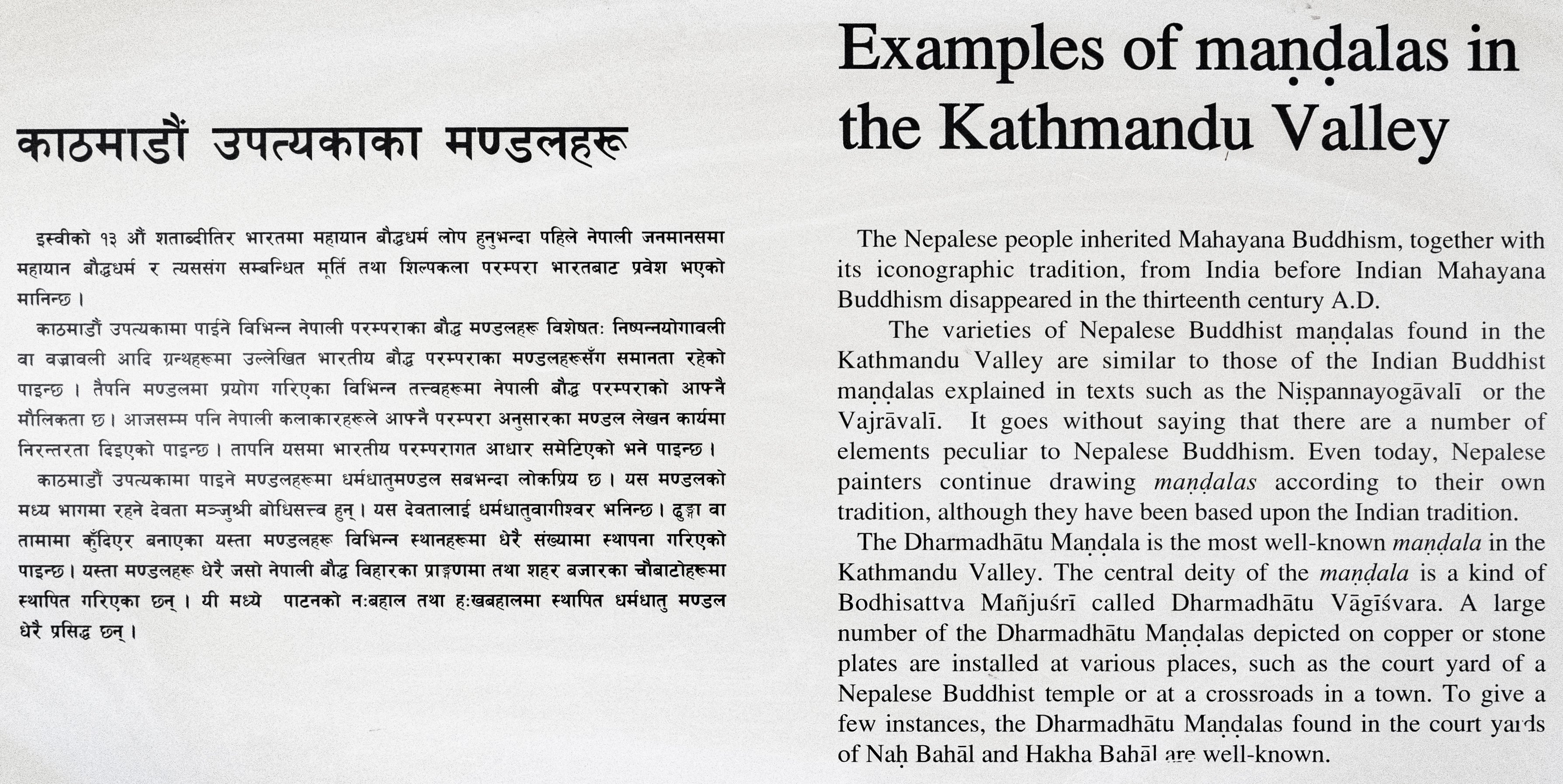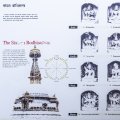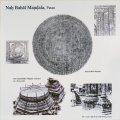Buddhist Art Gallery: Northern Himalayan Section: photo 111
Photo 111 of 198 in Gallery: Buddhist Art Gallery: Northern Himalayan Section

Image title: Mandalas in the Kathmandu Valley
Description of the photo
English text:
Examples of mandalas in the Kathmandu Valley—The Nepalese people inherited Mahayana Buddhism, together with its iconographic tradition, from India before Indian Mahayana Buddhism disappeared in the thirteenth century A.D.
The varieties of Nepalese Buddhist mandalas found in the Kathmandu Valley are similar to those of the Indian Buddhist mandalas explained in texts such as the Nispannayogavali or the Vajravali. It goes without saying that there are a number of elements peculiar to Nepalese Buddhism. Even today, Nepalese painters continue drawing mandalas according to their own tradition, although they have been based upon the Indian tradition.
The Dharmadhatu Mandala is the most well-known mandala in the Kathmandu Valley. The central deity of the mandala is a kind of Bodhisattva Manjushri called Dharmadhatu Vagishvara. A large number of the Dharmadhātu Mandalas depicted on copper or stone plates are installed at various places, such as the court yard of a Nepalese Buddhist temple or at a crossroads in a town. To give a few instances, the Dharmadhatu Mandalas found in the court yards of Nah Bahal and Hakha Bahal are well-known.
Nepalese text (not proofread)
काठमाडौं उपत्यकाका मण्डलहरू—इस्वीको १३ औं शताब्दीतिर भारतमा महायान बौद्धधर्म लोप हुनुभन्दा पहिले नेपाली जनमानसमा महायान बौद्धधमं र त्यससंग सम्बन्धित मूर्ति तथा शिल्पकला परम्परा भारतबाट प्रवेश भएको मानिन्छ ।
काठमाडौं उपत्यकामा पाइने विभिन्न नेपाली परम्पराका बौद्ध मण्डलहरू विशेषतः निष्पन्नयोगावली वा बजावली आदि ग्रन्थहरूमा उल्लेखित भारतीय बौद्ध परम्पराका मण्डलहरूसँग समानता रहेको पाइन्छ । तैपनि मण्डलमा प्रयोग गरिएका विभिन्न तत्त्वहरूमा नेपाली बौद्ध परम्पराको आफ्नै मौलिकता छ । आजसम्म पनि नेपाली कलाकारहरूले आफ्नै परम्परा अनुसारका मण्डल लेखन कार्यमा निरन्तरता दिइएको पाइन्छ । तापनि यसमा भारतीय परम्परागत आधार समेटिएको भने पाइन्छ ।
काठमाडौं उपत्यकामा पाइने मण्डलहरूमा धर्मधातुमण्डल सबभन्दा लोकप्रिय छ । यस मण्डलको मध्य भागमा रहने देवता मञ्जुश्री बोधिसत्त्व हुन् । यस देवतालाई धर्मधातुवागीश्वर भनिन्छ । ढुङ्गा वा तामामा कुँदिएर बनाएका यस्ता मण्डलहरू विभिन्न स्थानहरूमा धेरै संख्यामा स्थापना गरिएको पाइन्छ। यस्ता मण्डलहरू धेरै जसो नेपाली बौद्ध विहारका प्राङ्गणमा तथा शहर बजारका चौबाटोहरूमा स्थापित गरिएका छन्। यी मध्ये पाटनको नः बहाल तथा हः खबहालमा स्थापित धर्मधातु मण्डल धेरै प्रसिद्ध छन् ।
Nepalese to English (automated translation)
Mandalas of Kathmandu Valley - It is believed that before Mahayana Buddhism disappeared in India around the 13th century AD, Mahayana Buddhism and related sculpture and sculpture traditions entered the Nepali people's mind from India.
Buddhist temples of various Nepalese traditions found in Kathmandu valley are found to be similar to temples of Indian Buddhist tradition mentioned in Nispannayogavali or Bhajali etc. texts. However, Nepali Buddhist tradition has its own originality in the various elements used in the mandala. Even today, Nepali artists continue to write mandalas according to their own traditions. However, Indian traditional basis is included in it.
Dharmadhatumandal is the most popular among the mandalas found in Kathmandu Valley. The deity in the center of this mandala is Manjushri Bodhisattva. This deity is called Dharmadhatuwagishwar. Such mandals, carved in stone or copper, are established in large numbers at various places. Such mandals are mostly established in the courtyards of Nepali Buddhist Viharas and in the squares of city markets. Among these, the Dharmadhatu Mandal established in Patan's Naha Bahal and Haha Khabahal are very famous.
Transcription (with diacritics):
Kāṭhamāḍauṃ upatyakākā maṇḍalaharū—isvīko 13 auṃ śatābdītira bhāratamā mahāyāna bauddhadharma lopa hunubhandā pahile nepālī janamānasamā mahāyāna bauddhadhamaṃ ra tyasasaṃga sambandhita mūrti tathā śilpakalā paramparā bhāratabāṭa praveśa bhaeko mānincha .
kāṭhamāḍauṃ upatyakāmā pāine vibhinna nepālī paramparākā bauddha maṇḍalaharū viśeṣataḥ niṣpannayogāvalī vā bajāvalī ādi granthaharūmā ullekhita bhāratīya bauddha paramparākā maṇḍalaharūsaṃga samānatā raheko pāincha . Taipani maṇḍalamā prayoga gariekā vibhinna tattvaharūmā nepālī bauddha paramparāko āphnai maulikatā cha . Ājasamma pani nepālī kalākāraharūle āphnai paramparā anusārakā maṇḍala lekhana kāryamā nirantaratā diieko pāincha . Tāpani yasamā bhāratīya paramparāgata ādhāra sameṭieko bhane pāincha .
kāṭhamāḍauṃ upatyakāmā pāine maṇḍalaharūmā dharmadhātumaṇḍala sababhandā lokapriya cha . Yasa maṇḍalako madhya bhāgamā rahane devatā mañjuśrī bodhisattva hun . Yasa devatālāī dharmadhātuvāgīśvara bhanincha . Ḍhuṅgā vā tāmāmā kuṃdiera banāekā yastā maṇḍalaharū vibhinna sthānaharūmā dherai saṃkhyāmā sthāpanā garieko pāincha. Yastā maṇḍalaharū dherai jaso nepālī bauddha vihārakā prāṅgaṇamā tathā śahara bajārakā caubāṭoharūmā sthāpita gariekā chan. Yī madhye pāṭanako naḥ bahāla tathā haḥ khabahālamā sthāpita dharmadhātu maṇḍala dherai prasiddha chan .
Transcription (without diacritics):
kathamadaum upatyakaka mandalaharu—isviko 13 aum shatabditira bharatama mahayana bauddhadharma lopa hunubhanda pahile nepali janamanasama mahayana bauddhadhamam ra tyasasamga sambandhita murti tatha shilpakala parampara bharatabata pravesha bhaeko manincha .
kathamadaum upatyakama paine vibhinna nepali paramparaka bauddha mandalaharu visheshatah nishpannayogavali va bajavali adi granthaharuma ullekhita bharatiya bauddha paramparaka mandalaharusamga samanata raheko paincha . taipani mandalama prayoga garieka vibhinna tattvaharuma nepali bauddha paramparako aphnai maulikata cha . ajasamma pani nepali kalakaraharule aphnai parampara anusaraka mandala lekhana karyama nirantarata diieko paincha . tapani yasama bharatiya paramparagata adhara sametieko bhane paincha .
kathamadaum upatyakama paine mandalaharuma dharmadhatumandala sababhanda lokapriya cha . yasa mandalako madhya bhagama rahane devata manjushri bodhisattva hun . yasa devatalai dharmadhatuvagishvara bhanincha . dhunga va tamama kumdiera banaeka yasta mandalaharu vibhinna sthanaharuma dherai samkhyama sthapana garieko paincha. yasta mandalaharu dherai jaso nepali bauddha viharaka pranganama tatha shahara bajaraka caubatoharuma sthapita garieka chan. yi madhye patanako nah bahala tatha hah khabahalama sthapita dharmadhatu mandala dherai prasiddha chan .
Gallery information:
The Northern Himalayan region in Nepal offers a wide variety of Buddhist objects such as paintings, scriptures, sculptures, ritualistic objects, etc. Buddhism once entered Tibet from Nepal and has blended in its own way there, resulting in Tibetan Buddhism which is divided into many schools. The items found here are exhibited in the National Museum of Nepal (Rashtriya Museum).
Photo details:
Date: 2019-12-04
Camera: SONY ILCE-6400
Exposure: 1/160
Aperture: f/4
ISO: 2000
Focal length: 18mm
High resolution:
Download file
Size: 4.31 MB
Resolution: 3576 x 1794
© Photograph by Gabe Hiemstra.
License: CC BY-NC-ND 4.0

